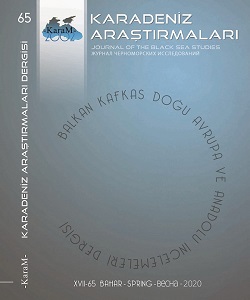Ограниченно-Кратное Значение НСВ или Суммарное Значение СВ: Использование Форм и Их Отличие
Limited Multiple Meaning of Imperfective or Cumulative Meaning of the Perfective: Which Form to Use or How to Distinguish One From Another?
Author(s): Leyla Çiğdem DalkılıçSubject(s): Foreign languages learning, Morphology, Lexis, Semantics, Eastern Slavic Languages, Turkic languages
Published by: Karadeniz Araştırmaları Merkezi
Keywords: Aspectuailty; Quantitive Aspectuality; Multiplicity; Perfective; Imperfective; Individual Aspectual Meanings;
Summary/Abstract: Vid in Russian, named as an aspect in Western languages, is a complex grammatical category, especially for those who study Russian as foreign language. This difficulty is especially noticeable in cases when, within the framework of aspect category one meaning can be transmitted by different language forms belonging to the same language classification. An example of such case is the meaning of multiplicity, which can be transmitted in the language with both imperfect and perfect forms that are interchangeable. The concept of “multiplicity”, which is a part of the quantitative aspectuality, manifests itself in the Russian language primarily in various particular aspect meanings of the forms of perfective and imperfective. Besides, it comes in as modes of action, or finds a lexical expression in the meaning of the verb itself, as well as using adverbs and adverbial words, which sometimes complicates the understanding of this category in usage. In this regard, the study of the linguistic units having different aspectual meanings and analysis of general and particular aspectual meanings play an important role in understanding of this category. In this regard, the purpose of this article is to determine the general features of the semantics of multiplicity, which is manifested in the forms of the limited multiple meaning of imperfective and the cumulative meaning of the perfective, which are a particular aspect meaning, as well as identification of patterns of interaction of multiplicity in these forms. In addition, in this study the attempts are made to establish a system of language means of expression of various shades of multiplicity values by the perfective and imperfective forms. For this purpose, these forms are considered in a comparative aspect, in order to understand the differences in expression between the Russian and Turkish languages in terms of their morphology and semantics.
Journal: Karadeniz Araştırmaları
- Issue Year: 2020
- Issue No: 65
- Page Range: 177-192
- Page Count: 16
- Language: Russian

